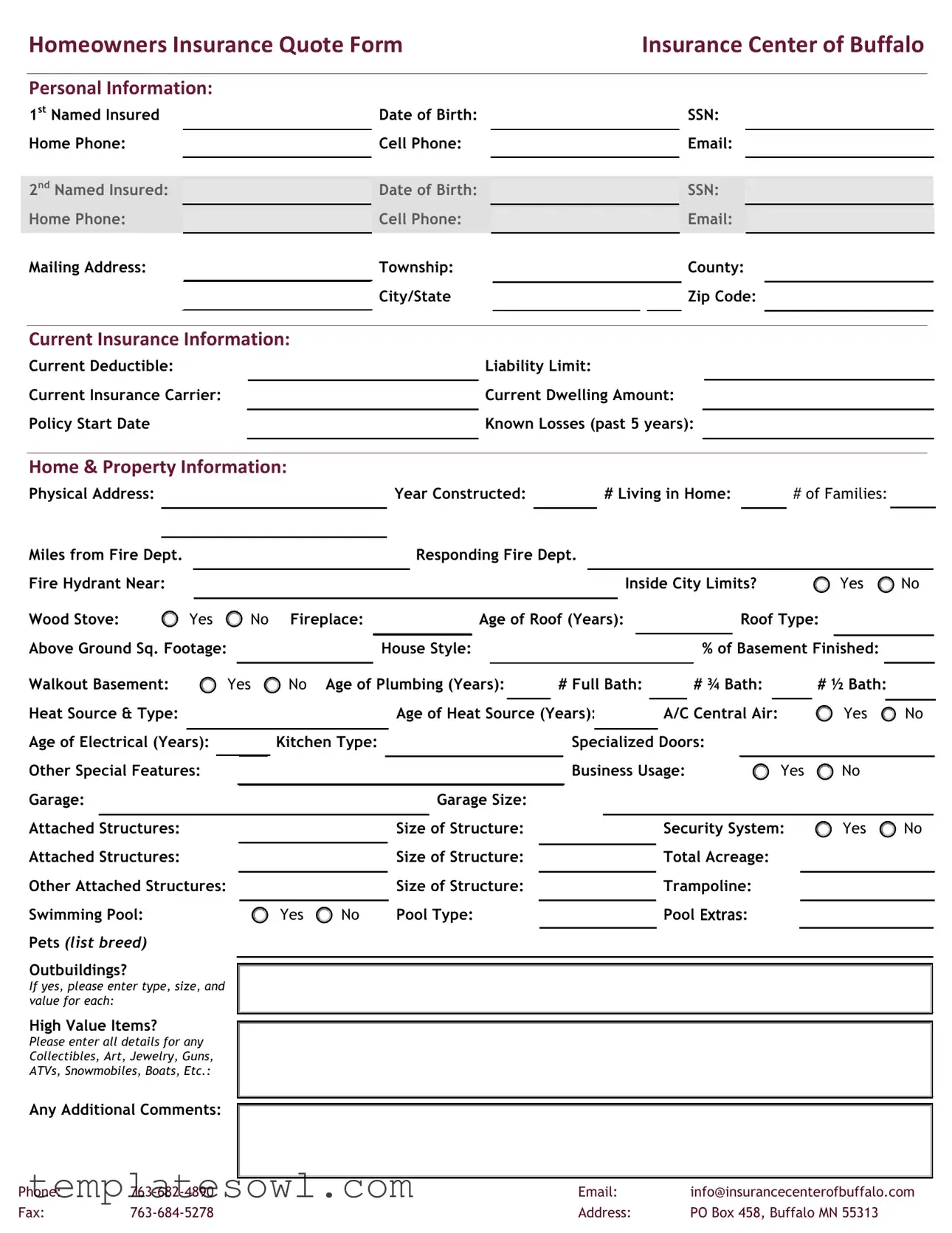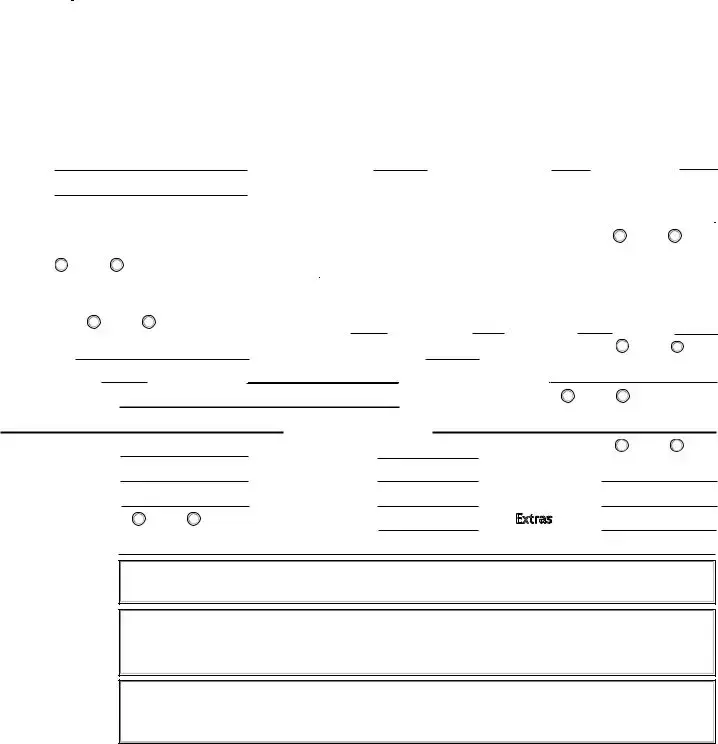What information do I need to provide for the Insurance Quote form?
To complete the Insurance Quote form, you should gather personal information for both the first and second named insured, including dates of birth, social security numbers, and contact details. You'll also need to provide the current insurance information, such as the current deductible, liability limit, insurance carrier, and dwelling amount. Details about your home and property will be required as well, including the physical address, year constructed, size, and any special features like security systems or swimming pools.
How is my insurance quote calculated?
Insurance quotes are based on various factors including the information provided in your quote form. Insurers assess the risk associated with your property, taking into account its age, condition, location, and features. Elements such as your previous insurance history, loss history over the past five years, and the types of coverage you request will influence the final quote. Quotes will reflect your coverage needs and can vary widely depending on these factors.
Can I make changes to my quote after submission?
Yes, you can make changes to your quote even after submission. If you need to update any information, such as changes to your home's features or personal details, it's best to contact the insurance provider directly. Provide them with the updated information and they will recalculate your quote accordingly. Clear communication helps ensure you receive the most accurate and tailored coverage for your needs.
What should I do if I don’t understand a specific question on the form?
If you encounter a question on the Insurance Quote form that you don't understand, don’t hesitate to reach out for assistance. You can contact the insurance center via phone or email. The team is there to help clarify any confusing terms or concepts. Providing accurate information is crucial for getting the best quote, so asking questions is encouraged.


 Year Constructed:
Year Constructed:  # Living in Home:
# Living in Home: 
